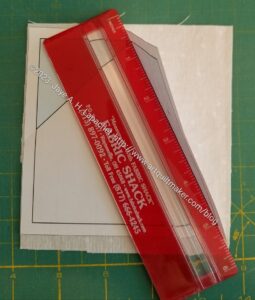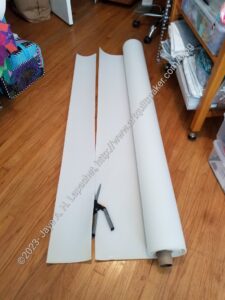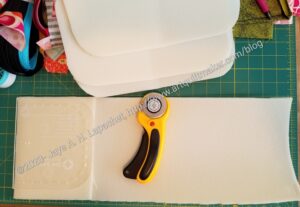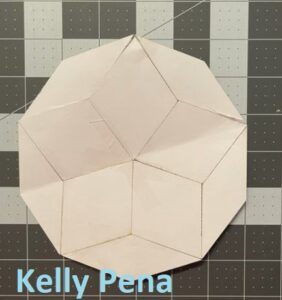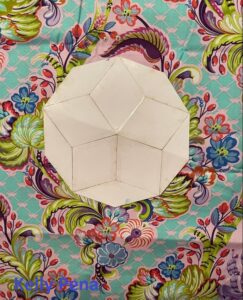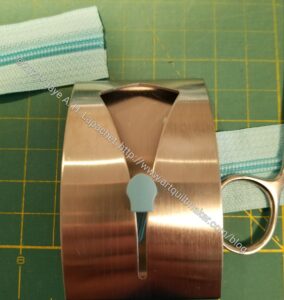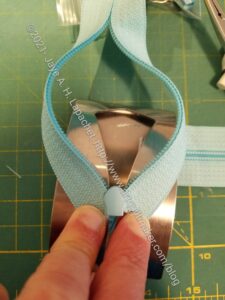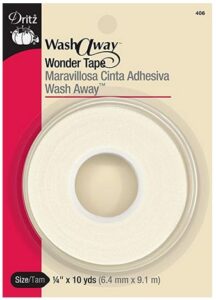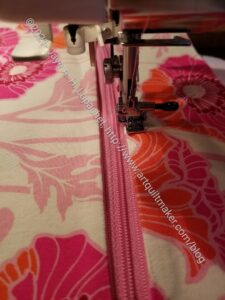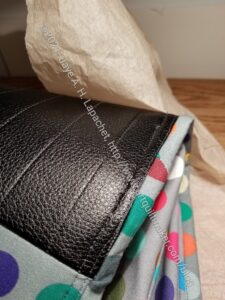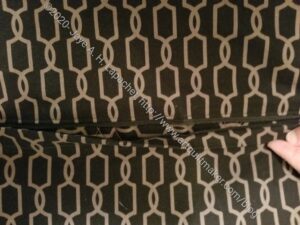I have been thinking about zipper installation since my sewing date with Cyndi. There, I installed two zippers.

The first one was the small pocket zipper, which went into place with no problem. That small pocket is a great opportunity to use some smaller zippers.
The second was the zipper for the overall bag, which didn’t go together at all well. This was completely my fault, because I was being lazy. I didn’t install the zipper foot and, thus, the edge of the regular foot interfered with the smooth installation of the zipper.

I suffered for my laziness and hope to have learned my lesson. I unstitched the whole zipper, installed the zipper foot and re-sewed the zipper. There were no wobbles using the zipper foot. My only complaint was that I found the end of the thread to be a pain because there is no foot under which to anchor it. I hope I will now have the habit of installing the zipper foot in the future.

On another bag, I installed an internal zipper pocket. I have always found that pressing the area around the zipper opening into shape before installing the zipper to be less than satisfactory. In this latest pattern, the designer suggested trimming away the foam to make the preparation for topstitching easier. I did that and did find it a bit easier. I could have probably trimmed more, but was trying to be careful since I have never done that before. If you haven’t ever made an inside zipper pocket, take a look at this tutorial. Also, Sara from Sew Sweetness* has a video for using her acrylic template. I have one of those templates and use it every time I make one of these pockets.
*no affiliation; just a happy customer
